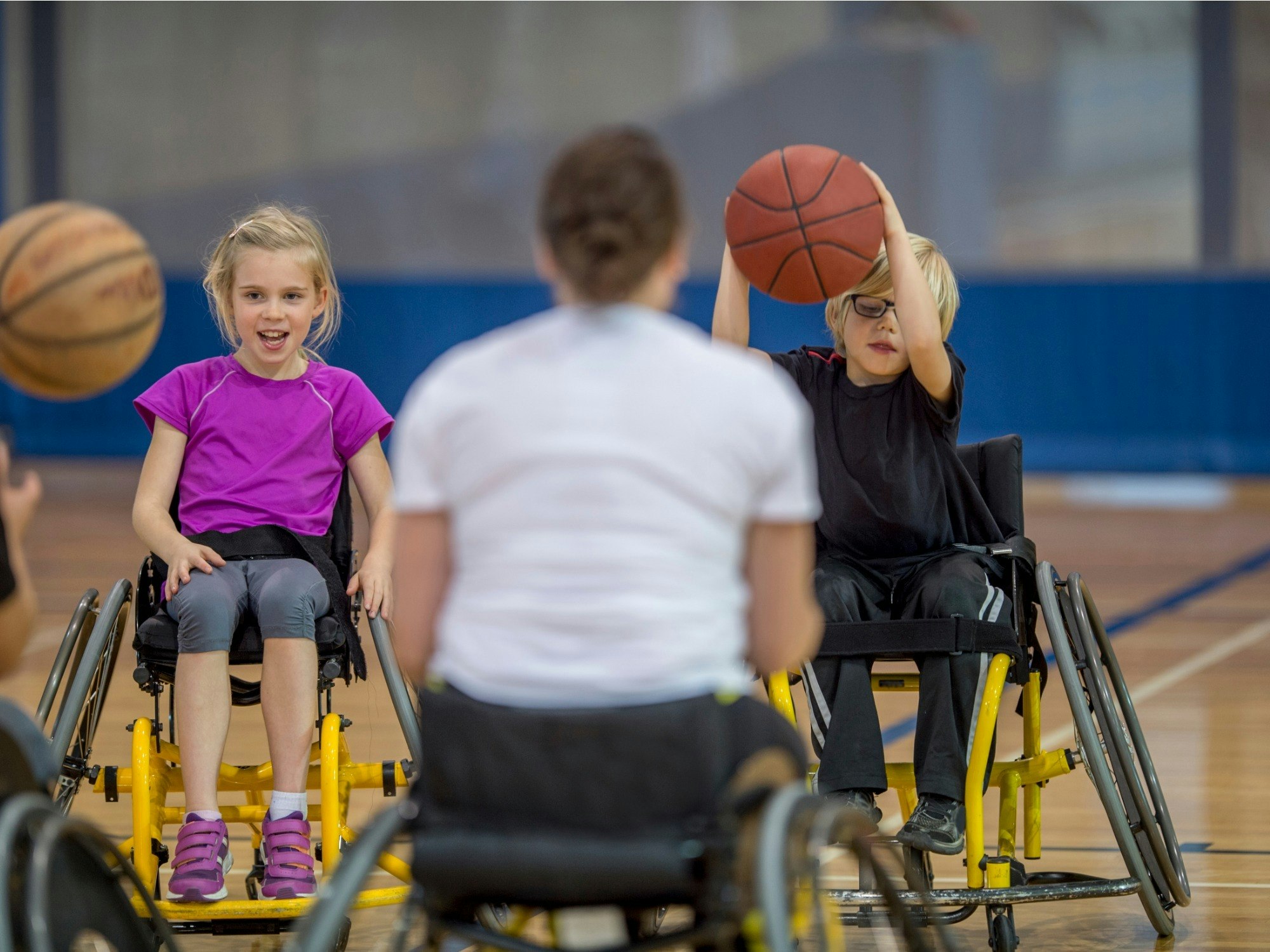(Wheel)chair exercises

Limited mobility, or using a wheelchair to get around, doesn’t mean you aren’t able to give exercise or sport a go.
Key points
-
There are always options to help you participate in exercise
-
It’s all about giving it a go and trying your best
-
You may need to have a chat with a GP or Personal Trainer before starting an exercise routine
Why exercise?
Being active is important for everyone and has some great health benefits, including improved cardiovascular health, strength and flexibility as well as reduced risk of developing some chronic illnesses or at least managing them better.
Regular physical activity is good not just for your physical health, it is also beneficial for your mental wellbeing and can be a great way to meet new people.
Exercise, even if you need to do it sitting down, can help improve your posture, reduce back pain, alleviate body sores and reduce the risk of injury when manoeuvring or pushing a wheelchair.
Cardio exercises
Depending on what your goals are, there are lots of different types of exercises ranging from strength to cardio that you can try.
Before exercising, it’s advised that you have a chat with your GP or a Personal Trainer to make sure you’re doing the right exercise or sport for you.
Cardiovascular, or cardio, is meant to raise your heart rate and make you warm enough to break a sweat. Generally, you should only be able to hold a conversation but not sing along to the radio while doing cardio.
Some cardio activity ideas include:
-
Aeroplane arms: Do this by sitting upright in your wheelchair or chair with your back straight, and extend your arms out straight at your sides. Use slow, large motions to create big circles with your arms. Start by going anti-clockwise then switch to clockwise.
-
Air punches: Air-punching, with or without weights, is an easy cardio exercise from a seated position. Simply sit straight in a chair and punch up as high as you can for either a set time or a set number of repetitions.
-
Medicine Ball: Use either a medicine ball or lighter basketball and bounce the ball between yourself and a wall. For a challenge set a time limit and see how many times you can bounce the ball on the wall in that time.
-
Handbike: You may need to go to an accessible gym to access the equipment or purchase one yourself. Handbikes are adapted for wheelchair users and allow you to use your hands to push the pedals.
-
Push yourself: If you don’t have the equipment, you can simply set a time, and push your wheelchair. Start with a short time, for example, 5 minutes, and slowly build this up as your fitness improves. If you do this at a steady casual pace, this will help get your heart rate up.
Muscle strengthening exercises
If you’re looking for something a bit more competitive, then you can try sports that have been adapted for wheelchair users like basketball, netball, tennis, and volleyball.
Pushing a wheelchair or maneuvering one around can be hard work, but muscle strengthening exercises can help with reducing the risk of injury.
Your chest and shoulder muscles may be at greater risk of injury because of the repeated pushing motion used to push a wheelchair, while back muscles can become weaker because they are not used as often.
You may need to focus on exercises that strengthen the muscles that are used when pushing, such as the shoulder muscles.
You can also strengthen your back muscles by doing exercises that involve a pulling motion, such as a pull-up.
Some strength activity ideas include:
-
Resistance bands: Resistance bands are good for strengthening and conditioning. Like with weights, it’s best to work your way up to harder bands. There are heaps of exercises you can do with resistance bands, including holding your resistance band with both hands in front of you and stretching it as much as possible before relaxing again. You can also wrap your resistance band around your wheelchair or chair’s backrest, take both the loose ends in your hands and stretch them as much as you can, in front of you.
-
Bodyweight exercises: Bodyweight exercises don’t use additional equipment.
Examples of bodyweight exercises include a tummy twist. To do a tummy twist sit up straight with your feet flat. Hold both arms at a 90-degree angle, with forearms extended in front of you and elbows at your sides. Rotate your upper torso to the left, then to the centre and then to the right.
You can also do shoulder raises. Put your arms straight down on either side of your wheelchair. Lift them forwards until they are above your head. Repeat. Then, lift them up sideways until they are over your head. Repeat. Next, move them backwards in a circular motion, then forwards. Repeat.
What do you do to stay active? Tell us in the comments below.
Related links